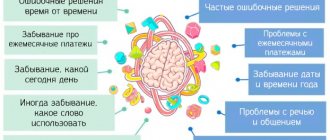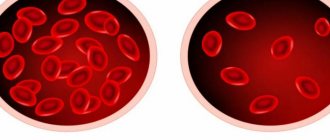13 minutes
23 views
With physiological aging, healthy elderly people (60-74 years old) experience changes in metabolism and the state of organs and systems of the body. By changing the nature of nutrition, one can influence the metabolism, adaptive (adaptive) and compensatory capabilities of the body and thus influence the pace and direction of the aging process.
Rational nutrition in old age (herodietics) is an important factor in the prevention of pathological effects on physiologically natural aging.
Basic principles of nutrition for practically healthy elderly people
- Strict compliance of the energy value of the diet with actual energy consumption. A significant decrease in the intensity of metabolic processes and limitation of physical activity, characteristic of older people, cause a decrease in their need for nutrients and energy. At the age of 60-69 years and 70-80 years, the energy value of the diet is on average 80 and 70%, respectively, of that at 20-40 years. The energy value of the diet is limited by sugar, confectionery and flour products, fatty meat products and other sources of animal fats .Recommended daily intake of energy, protein, fat and carbohydrates:
- men (60 -74 years old): 2300 kcal, proteins - only 70 g, of which animal origin - 38; fats - 77 g, carbohydrates - 333 g.
women (60-74 years old): 2100 kcal, proteins - only 65 g, of which animal origin - 35 g, fats - 70 g, carbohydrates - 305 g.
- Anti-sclerotic focus of nutrition by changing the chemical composition of the diet and enriching it with products that are sources of anti-sclerotic substances.
- A variety of food products to ensure optimal and balanced content of all essential nutritional factors in the diet.
- The use of foods and dishes that are fairly easy to digest in combination with foods that moderately stimulate the secretory and motor functions of the digestive organs
- Strict adherence to a diet with a more uniform distribution of food into individual meals compared to young people.
- Individualization of nutrition, taking into account metabolism and the state of individual organs and systems.
However, for older people who continue to work, the values specified in the standards can be increased taking into account the nature of the work.
Some older people are prone to overeating. The aging body is especially sensitive to excess nutrition, which not only leads to obesity, but, more than at a young age, predisposes to atherosclerosis, hypertension, coronary heart disease, diabetes, etc., and ultimately contributes to premature aging.
Squirrels
In old age, the intensity of self-renewal of proteins decreases, which determines a decrease in the need for them. However, insufficient protein intake aggravates age-related changes in metabolism and leads to various manifestations of protein deficiency in the body more quickly than at a young age.
The daily protein requirement for elderly men and women is on average 70 and 65 g, respectively. Animal proteins should make up 50-55% of the total protein. Low-fat dairy and fish products and non-fish seafood are desirable as sources of animal proteins.
Animal and poultry meat is moderately limited. Excessive intake of proteins negatively affects the aging body, causes excessive stress on the liver and kidneys, and contributes to the development of atherosclerosis.
Avocado
The overseas fruit contains unsaturated fats, which compete with saturated fats in the body. The winners are those who currently have more in the body. Avocados contain a lot of valuable fats that block the absorption of cholesterol from the intestines.
Observations by Mexican scientists have shown that daily consumption of avocados helps maintain healthy cholesterol levels and an optimal combination of low and high density lipoproteins. The fruit increases the level of “good” lipoproteins by 17 percent compared to “bad” ones.
Avocado contains valuable fats (Photo: Pixabay.com)
Fats
The fat content in the diet should not exceed an average of 75 and 70 g per day for older men and women, respectively. Sources of animal fats, especially refractory ones, in particular meat and fatty sausages, are subject to restrictions. Milk fats, which are easily digestible and contain lecithin and fat-soluble vitamins, can make up up to a third of all dietary fats.
At least a third of the fats should be vegetable oils (20-25 g per day). Preferred are unrefined vegetable oils, which contain more substances important for older people, such as phosphatides, sitosterol, vitamin E, as well as vegetable oils in their natural form (in salads, vinaigrettes, porridges), and not after heat treatment.
Fatty acids from vegetable oils have a positive effect on metabolism, in particular cholesterol, in the aging body. However, excessive consumption of vegetable oils is impractical due to their high energy value and the possibility of accumulation of oxidation products of unsaturated fatty acids in the body. For individual meals, the amount of fat with a high content of saturated fatty acids, including butter, should not exceed 10-15 g. Cholesterol is limited in the diet, but foods that are simultaneously rich in it and anti-atherosclerotic substances (lecithin, vitamins, etc.) are not excluded. for example eggs, liver.
Beverages
Drinks consumed in everyday life can be an excellent preventive measure for vascular diseases. Let's also consider the features of drinking alcohol for medicinal purposes.
- Coffee. Able to constrict blood vessels in the brain and abdominal cavity, and expand muscles. With reduced blood pressure, it improves blood flow, eliminates swelling of the legs, and relieves pain from angina pectoris. If you have high blood pressure, strong coffee is dangerous. For atherosclerosis, a high-quality instant drink is indicated, since when cooking a natural drink, substances appear that contribute to the accumulation of cholesterol on the vascular walls.
- Green tea. The benefits of the drink are controversial due to the large amount of caffeine in the composition. However, drinking 2 cups a day will not cause harm. Tea lowers cholesterol levels, smoothly cleanses the walls of blood vessels, and tones.
- Dry red vintage wine and cognac. When consumed in small quantities, drinks dilate blood vessels, prevent the formation of fatty deposits in their lumens, dissolve accumulated ones, and preserve the youth of the circulatory system. Table or sweet wine, on the contrary, increases blood pressure and is not beneficial. Cognac is useful only in a dose of 30-50 ml; exceeding the volume can be harmful.
Carbohydrates
The carbohydrate content in the diet should be on average 340 and 310 g for elderly men and women, respectively. As sources of carbohydrates, foods rich in starch and dietary fiber (fiber, pectin, etc.) are preferred: wholemeal and bran bread, whole grain cereals , vegetables, fruits, berries.
Dietary fiber is necessary to stimulate the motor function of the gastrointestinal tract and bile secretion, since constipation and congestion in the gallbladder are common in older people. Dietary fiber helps remove cholesterol from the body.
The diet is limited to easily digestible carbohydrates, primarily sugar, confectionery, and sweet drinks. Their content should not exceed 15% of all carbohydrates (up to 15 g per serving), and if you are prone to obesity - 10%. This is due to an age-related decrease in tolerance to carbohydrates, in particular due to changes in the insular apparatus of the pancreas, increased formation of fat and cholesterol due to easily digestible carbohydrates, and their adverse effect on the functions of the cardiovascular system of older people. Lactose and fructose should predominate among easily digestible carbohydrates (dairy products, fruits, berries).
Persimmon
The tender persimmon pulp is rich in fiber and pectin. In the intestines, these substances create a viscous mass that absorbs everything in its path: toxins, cholesterol, bile, heavy metal salts. Therefore, persimmon is recommended to be consumed to detoxify the body.
Persimmon also helps blood vessels: by reducing cholesterol levels, it prevents plaque from sticking to the walls of blood vessels. Plus, the fruit is rich in antioxidants - carotenoids. They have an anti-inflammatory effect and protect against cancer.
Persimmon contains carotenoids and pectin (Photo: Pixabay.com)
Minerals
In old age, it is possible to oversaturate the body with certain minerals, or their deficiency. For example, calcium salts are deposited in the walls of blood vessels, joints and other tissues. If there is a deficiency of calcium in food or an excess of nutrients, its absorption deteriorates (phytins in grain and legume products, oxalic acid, fats), calcium is removed from the bones. This, especially against the background of a lack of proteins, can lead to osteoporosis.
The body's need of older people for calcium is 0.8 g, for phosphorus - 1.2 g. It is advisable to increase the amount of magnesium to 0.5 - 0.6 g per day, taking into account its antispastic effect, the ability to stimulate intestinal motility and bile secretion, and normalize metabolism cholesterol.
If the potassium content in the diet is sufficiently high (3-4 g per day), the amount of sodium chloride should be moderately limited to 10 g per day, mainly by reducing the consumption of salty foods. This is of particular importance if you are prone to high blood pressure.
The iron requirement is 10 - 15 mg per day, regardless of gender. If the diet is dominated by grain products and little meat, fish, fruits and berries, this amount of iron may be insufficient. It should be taken into account that in old age iron deficiency anemia is often observed, especially with diseases of the gastrointestinal tract. In addition, with physiological old age, bone marrow iron reserves decrease and the efficiency of iron incorporation into red blood cells decreases.
Cellulose
Fiber is not an independent product, but a component of plant foods. Champions in its content are legumes, whole grains and bran, berries and fruits, vegetables. The higher the fiber content in the diet, the better the condition of the circulatory system. Coarse plant fibers work only in the intestines, but heal the entire body.
They improve intestinal motility and remove toxins from the activity of pathogenic bacteria. Fiber absorbs water, swells and creates a feeling of fullness, which reduces appetite. Removes cholesterol from the intestines and reduces the absorption of sugars from food, which serves as a prevention of diabetes mellitus and atherosclerosis.
Vitamins
With physiological aging, the metabolism of a number of vitamins changes, but these changes do not indicate an increased need for vitamins. However, some older people experience vitamin deficiency due to poor nutrition or impaired absorption of vitamins. In case of diseases, vitamin deficiency in the body occurs faster in old age than in young age.
We must focus on providing vitamins from natural sources - food. This does not exclude additional fortification, for example, vitamin C in the winter-spring period. Before taking multivitamin preparations, you should consult your doctor, because... Excessive intake of vitamins is harmful to the aging body.
Diet
The basic principles of the diet of older people are regular meals, the exclusion of long intervals between them, and the exclusion of large meals. This ensures normal digestion and prevents overstrain of all body systems that ensure the absorption of nutrients.
With physiological aging, the functions of the digestive organs are moderately reduced, but adaptive capabilities are significantly limited, so large food loads may be unbearable for them.
The most rational diet is 4 meals a day: 1st breakfast - 25% of the daily energy value of the diet; 2nd breakfast - 15-20%; lunch - 30-35%; dinner - 20-25%.
For diseases of the elderly, a 5-time diet is desirable: 1st breakfast - 25% of the daily energy value of the diet; 2nd breakfast - 15%; lunch - 30%; dinner - 20%; 2nd dinner - 10%.
For healthy older people, there are no prohibited foods, only more or less preferred ones. It is unacceptable to become addicted to any one or a group of food products, since even their high nutritional value cannot compensate for the defects of one-sided nutrition.
Recommended list of products
Bread and flour products
Wheat and rye bread, better than yesterday's baked goods, bread containing bran, crackers, cookies. Butter dough is limited.
Soups
vegetarian, vegetable (cabbage soup, beetroot soup, borscht), fruit, cereal. Low-fat meat and fish broths no more than 2-3 times a week.
Meat, poultry, fish
Low-fat varieties are recommended, mainly boiled, possibly followed by frying, baked and chopped (cutlets, dumplings, meatballs).
Fish dishes for people suffering from cardiovascular diseases: cooking rules and recipes
Non-fish seafood (squid, mussels, etc.), in particular stewed or baked with vegetables, salads with vegetables, etc.
Seafood dishes for people suffering from cardiovascular diseases: cooking rules and recipes
Dairy
All types are recommended, preferably low-fat (milk, fermented milk drinks, semi-fat and low-fat cottage cheese, low-fat and low-salt cheeses).
Cardiovascular diseases: therapeutic nutrition. Cottage cheese dishes
Limit cream, sour cream, fatty cottage cheese, salty and fatty cheeses.
Eggs
Up to 2-4 per week. Soft-boiled, milk-protein omelettes, in dishes. Limit egg yolks.
Cereals
Porridges, casseroles, puddings from various cereals in combination with milk, cottage cheese, dried fruits, carrots. Limit pasta and legumes.
Vegetables
Various raw and cooked. Dishes made from vegetables and seaweed (salads, vinaigrettes, side dishes) are widely recommended.
Cardiovascular diseases: therapeutic nutrition. Dishes of boiled and stewed vegetables
Spinach and sorrel are limited.
Snacks
Low-fat types of boiled sausages and sausages, ham, mild cheeses, boiled jellied fish, seafood, vegetable salads and vinaigrettes with vegetable oil. Limit smoked, salted, spicy snacks, caviar, and canned food.
Fruits, sweets
Various fruits in any form - raw, baked, dry, puree, jelly, compotes, etc. Semi-sweet dessert dishes. Honey is preferred instead of sugar.
Cardiovascular diseases. Therapeutic nutrition: fruits and berries
Limit sugar, confectionery products, especially creamy ones, and ice cream.
Sauces and spices
Dairy, vegetable broth, fruit, tomato. In moderation: citric acid, vinegar, vanillin, cinnamon, allspice, bay leaf. Horseradish and mayonnaise are limited. Exclude meat, fish, mushroom gravy, mustard.
Beverages
Weak tea and coffee, possibly with milk, fruit, vegetable and berry juices, fruit drinks, rosehip decoction. Limit kvass and carbonated drinks.
Fats
Various types of cow butter - limited (3-5 g per serving) for sandwiches and dressing ready-made dishes. Limit lard and margarine. It is advisable to exclude lamb, beef and cooking fats. Vegetable oils are widely used - for salads, vinaigrettes, in dishes, etc.
For diseases of older people who require therapeutic nutrition, one should be guided by recommendations for dietary therapy for specific diseases, but with changes in the energy value, chemical composition and food set of therapeutic diets, taking into account the considered principles of nutrition for physiological old age.
The material uses recommendations from the “Handbook of clinical nutrition for dietitians and cooks” / Smolyansky B.L., Abramova Zh.I.
Dear readers, the articles are for informational purposes only. Before using the recommendations, you should consult your doctor.









